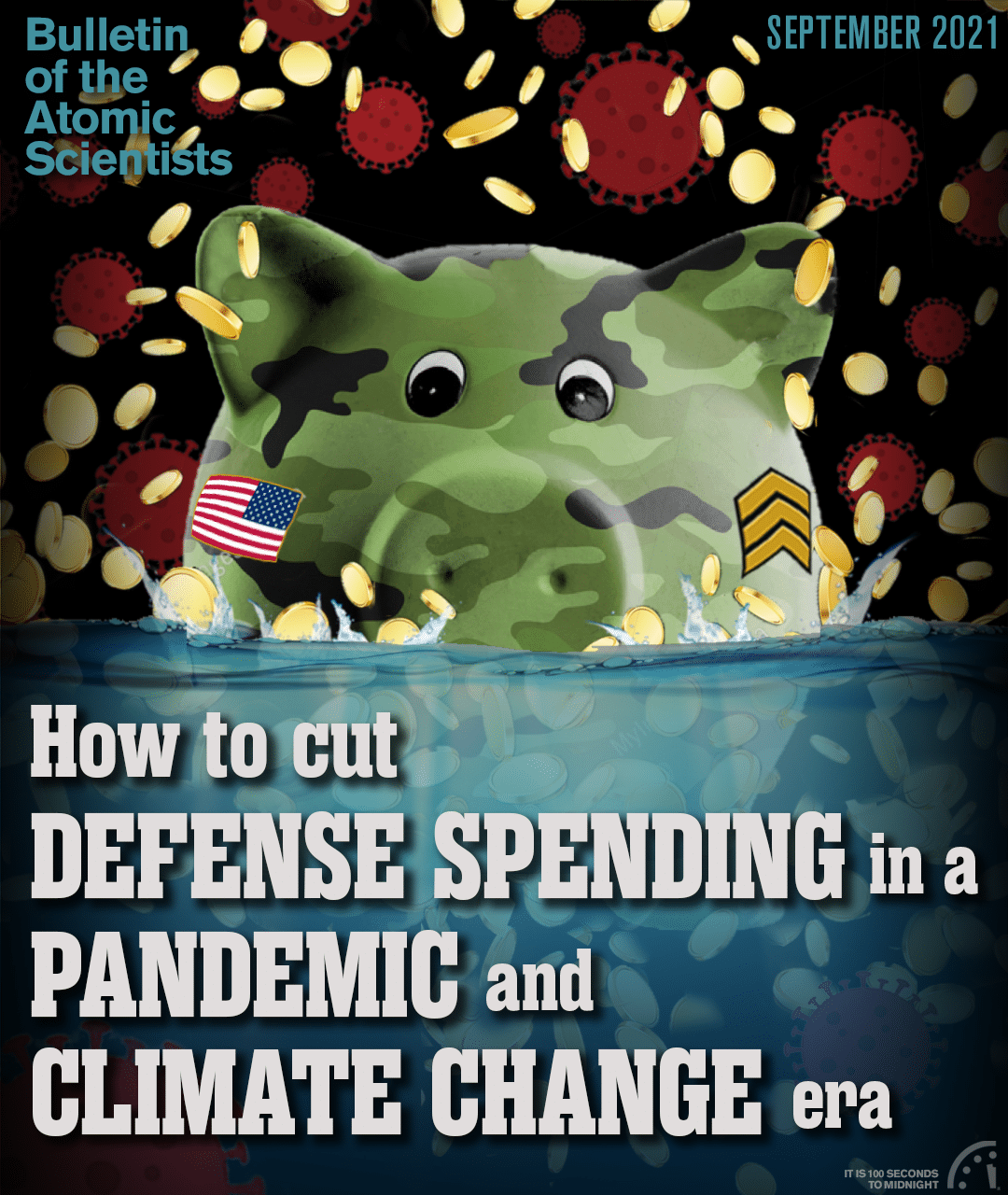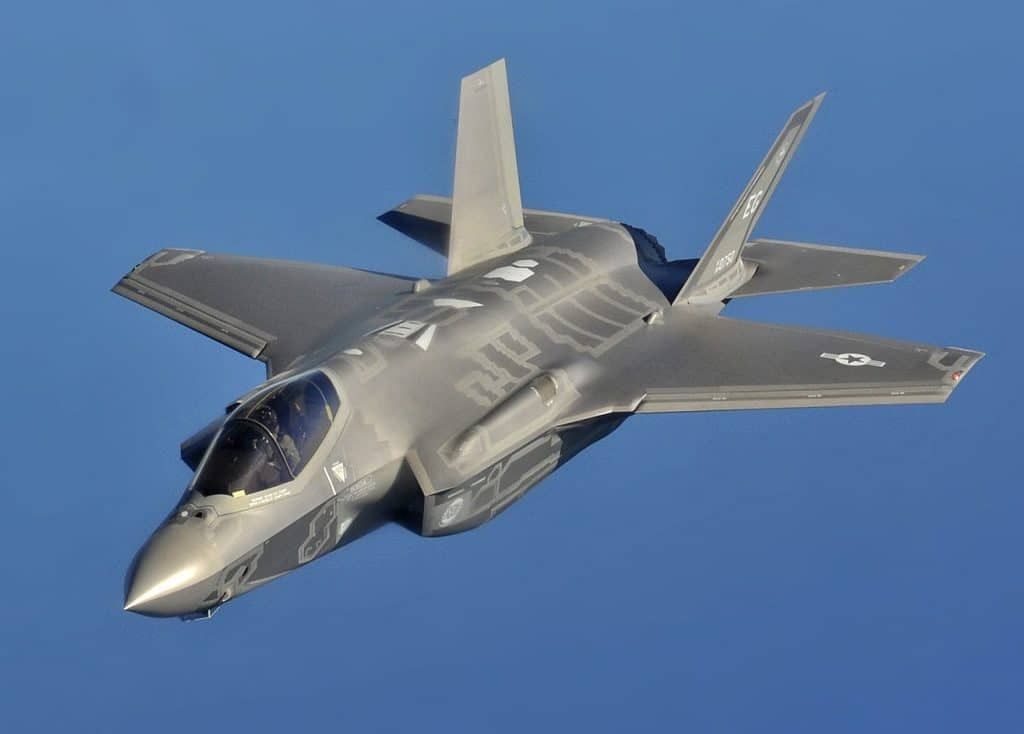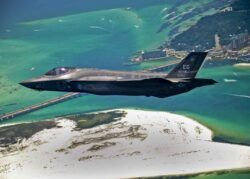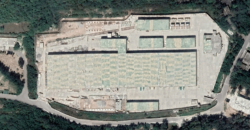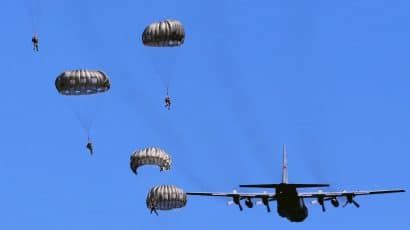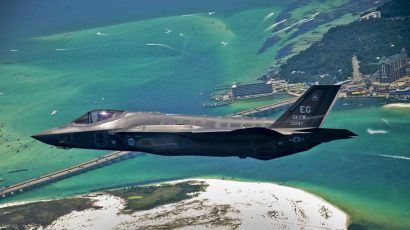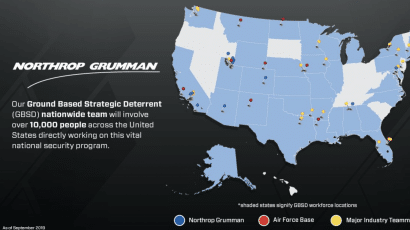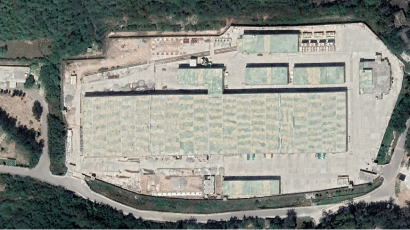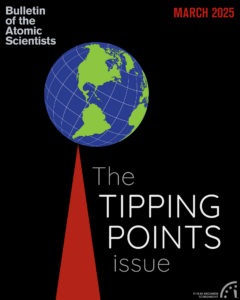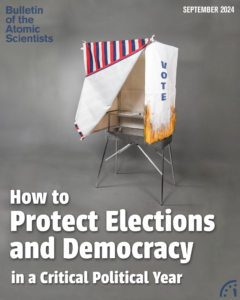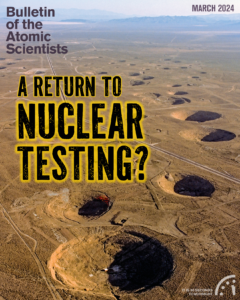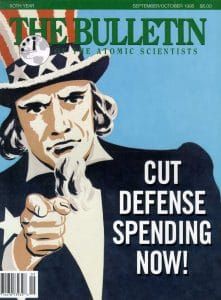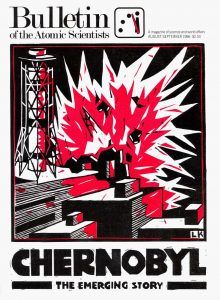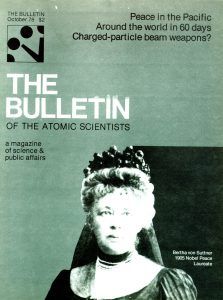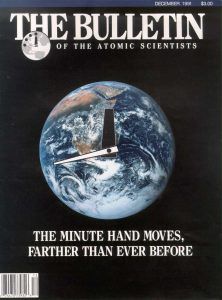DIGITAL MAGAZINE
September 2021
DIGITAL MAGAZINE
September 2021
In the September issue of the Bulletin of the Atomic Scientists, five expert observers of US military spending provide their views on bringing a measure of sanity to the process by which successive Congresses and presidents produce—almost automatically, with little that resembles probing oversight or even rational discussion—ever-larger US defense budgets.
Introduction: Can we make overspending on the military politically costly?
In the September issue of the Bulletin of the Atomic Scientists, five expert observers of US military spending provide their views on bringing a measure of sanity to the process by which successive Congresses and presidents produce—almost automatically, with little that resembles probing oversight or even rational discussion—ever-larger US defense budgets.
A new transatlantic division of labor could save billions every year!
In this article, the author argues for a strategic reconsideration of one major element of the US defense effort—the commitment to the North Atlantic Treaty Organization. He shows how major reforms in the implementation of US alliance commitments can save as much as $70 billion to $80 billion per year with little change in the risk to US interests.
Interview: Diane Randall, general secretary of the Friends Committee on National Legislation, discusses restraining the US defense budget
The leader of the Quakers argues that when it comes to how we should spend the federal government's money, it really comes down to guns versus butter. If we could reduce the Pentagon's budget by 10, 20, or even 50 percent, what would that free up for other expenditures—such as fighting threats like climate change?
Why President Biden needs to revisit—and reduce—his defense budget
With the timing and substance of its fiscal 2022 defense budget, the Biden administration has made several poor choices that do not enhance US security in a cost-effective manner. In effect, the Biden budget ratifies a massive unnecessary defense buildup that was undertaken by President Trump.
The United States needs to cut military spending and shift money to two pressing threats: pandemics and climate change
The Biden administration had an opportunity to redirect the United States’ path away from all but limitless spending on the Defense Department. That path could and should have centered on the most imminent threats to our security: climate change and potentially pandemic infectious diseases. But the Biden budget is one that only a defense contractor could love; it continues spending for unproven weapon systems, unsustainable and unneeded nuclear weapons efforts, and a new Cold War with China.
Interview: Tom Collina of the Ploughshares Fund on the politics of defense spending
The US Senate Armed Services Committee endorsed a 2022 defense budget of $778 billion, a $38 billion increase over the previous, enormous defense spending plan. Defense expert Tom Collina, director of policy at the Ploughshares Fund, talks with Bulletin Editor-in-Chief John Mecklin about how to bring Pentagon spending under control.
The history of nuclear power’s imagined future: Plutonium’s journey from asset to waste
Separated civil plutonium should be formally regarded as a waste, not a fuel that has value. It is time for governments and industries to acknowledge–everywhere–that civil reprocessing, plutonium’s provider, is a waste-generating and complicating technology, a source of dangers and burdens rather than putative benefits. Much better solutions to spent fuel management and energy production now exist. Long unwanted as fuel by utilities, immense stocks of plutonium have accumulated in France, Japan, Russia and the UK from reprocessing programs launched in the 1970s. Politically embedded, they continued long after the “plutonium economy” and its fast breeder reactors had lost credibility. China, a recent advocate, should beware of the costs of going down this road and of stoking insecurities in Asia and beyond if connections to weapon programs are feared. Drawing upon a recent book by Frank von Hippel, Masafumi Takubo, and Jungmin Kang, this essay provides a fresh perspective on plutonium and reprocessing’s troubled international histories, including histories of imagined futures that have so heavily influenced their politics and economics.
Nuclear Notebook: How many nuclear weapons does Pakistan have in 2021?
This Nuclear Notebook column examines Pakistan’s nuclear arsenal, which may include approximately 165 warheads. The authors estimate that the country’s stockpile could realistically grow to around 200 by 2025, if the current trend continues.
A new transatlantic division of labor could save billions every year!
In this article, the author argues for a strategic reconsideration of one major element of the US defense effort—the commitment to the North Atlantic Treaty Organization. He shows how major reforms in the implementation of US alliance commitments can save as much as $70 billion to $80 billion per year with little change in the risk to US interests.
Interview: Diane Randall, general secretary of the Friends Committee on National Legislation, discusses restraining the US defense budget
The leader of the Quakers argues that when it comes to how we should spend the federal government's money, it really comes down to guns versus butter. If we could reduce the Pentagon's budget by 10, 20, or even 50 percent, what would that free up for other expenditures—such as fighting threats like climate change?
Why President Biden needs to revisit—and reduce—his defense budget
With the timing and substance of its fiscal 2022 defense budget, the Biden administration has made several poor choices that do not enhance US security in a cost-effective manner. In effect, the Biden budget ratifies a massive unnecessary defense buildup that was undertaken by President Trump.
The United States needs to cut military spending and shift money to two pressing threats: pandemics and climate change
The Biden administration had an opportunity to redirect the United States’ path away from all but limitless spending on the Defense Department. That path could and should have centered on the most imminent threats to our security: climate change and potentially pandemic infectious diseases. But the Biden budget is one that only a defense contractor could love; it continues spending for unproven weapon systems, unsustainable and unneeded nuclear weapons efforts, and a new Cold War with China.
Interview: Tom Collina of the Ploughshares Fund on the politics of defense spending
The US Senate Armed Services Committee endorsed a 2022 defense budget of $778 billion, a $38 billion increase over the previous, enormous defense spending plan. Defense expert Tom Collina, director of policy at the Ploughshares Fund, talks with Bulletin Editor-in-Chief John Mecklin about how to bring Pentagon spending under control.
The history of nuclear power’s imagined future: Plutonium’s journey from asset to waste
Separated civil plutonium should be formally regarded as a waste, not a fuel that has value. It is time for governments and industries to acknowledge–everywhere–that civil reprocessing, plutonium’s provider, is a waste-generating and complicating technology, a source of dangers and burdens rather than putative benefits. Much better solutions to spent fuel management and energy production now exist. Long unwanted as fuel by utilities, immense stocks of plutonium have accumulated in France, Japan, Russia and the UK from reprocessing programs launched in the 1970s. Politically embedded, they continued long after the “plutonium economy” and its fast breeder reactors had lost credibility. China, a recent advocate, should beware of the costs of going down this road and of stoking insecurities in Asia and beyond if connections to weapon programs are feared. Drawing upon a recent book by Frank von Hippel, Masafumi Takubo, and Jungmin Kang, this essay provides a fresh perspective on plutonium and reprocessing’s troubled international histories, including histories of imagined futures that have so heavily influenced their politics and economics.
Nuclear Notebook: How many nuclear weapons does Pakistan have in 2021?
This Nuclear Notebook column examines Pakistan’s nuclear arsenal, which may include approximately 165 warheads. The authors estimate that the country’s stockpile could realistically grow to around 200 by 2025, if the current trend continues.
Subscribe now
We've relaunched the Bulletin's award-winning digital magazine. Get access to every issue and our archive going back to 1945.
Magazine archive

Premium subscribers can read the complete Bulletin of the Atomic Scientists’ archive, which contains every article published since our founding in 1945.
This archive was created in honor of John A. Simpson, one of the Bulletin’s principal founders and a longtime member of its Board of Sponsors. This searchable archive provides exclusive online access to original interviews and commentary by luminaries like Albert Einstein, J. Robert Oppenheimer, Ruth Adams, John F. Kennedy, Stephen Hawking, Christine Todd Whitman, US Secretary of Defense William J. Perry, and multiple Nobel laureates.
